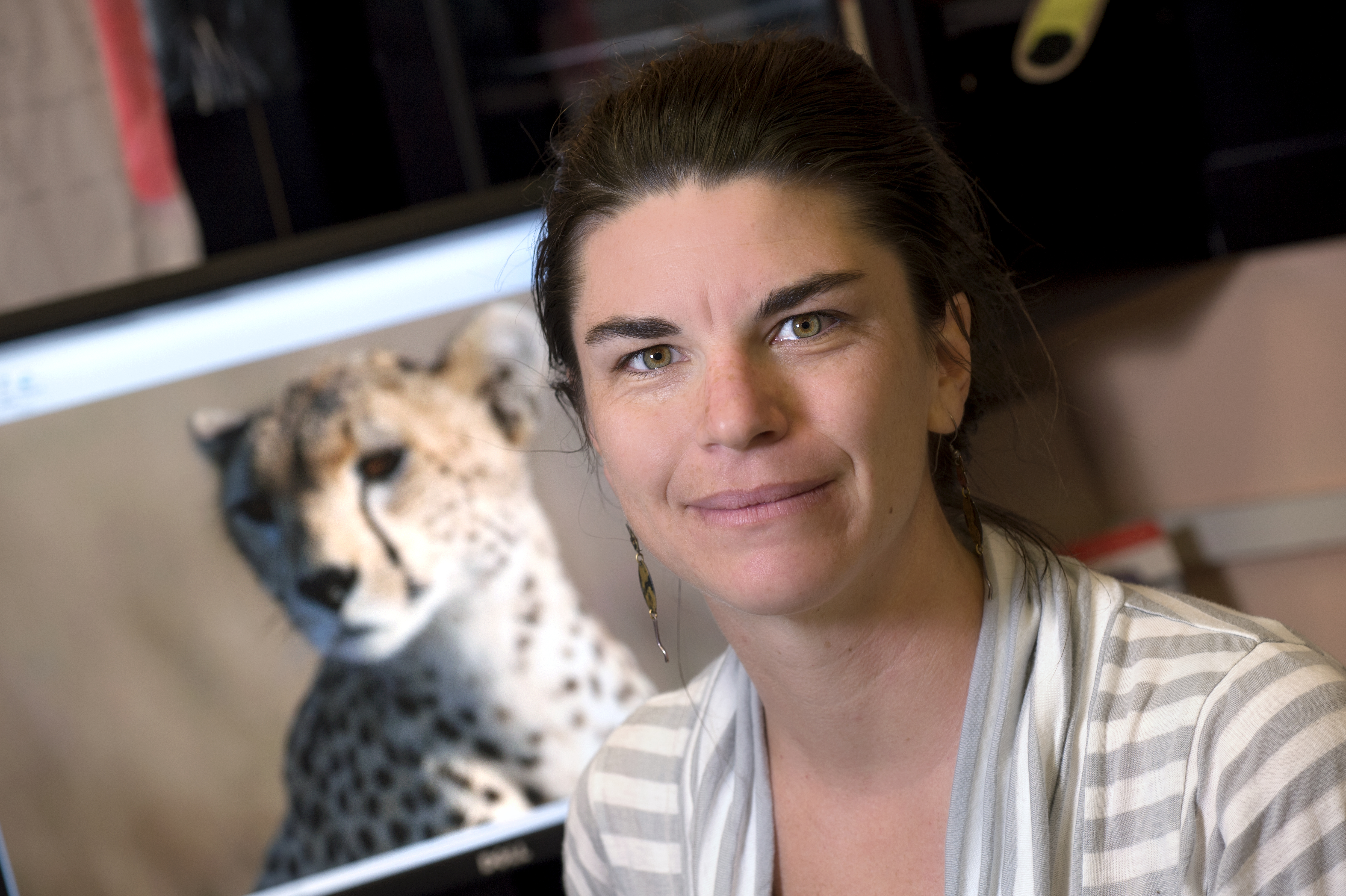Doctoral student Anne Hilborn shares Serengeti field work and photos on Twitter

From her desk in a third floor lab in Cheatham Hall, Department of Fish and Wildlife Conservation doctoral student Anne Hilborn shares tales of field research discoveries, adventures, and mishaps in 140-character bursts.
As she analyzes data acquired during field work researching cheetahs in Serengeti National Park in Tanzania, Hilborn, of Seattle, Washington, uses Twitter (@annewhilborn) to post photos, findings and information about a range of animals she encountered, reaching a wide audience that includes educators, other graduate students, scholars, the media and the public across the globe.
She studies predator-prey interactions, focusing on cheetahs because they hunt by day on open plains, are affected by lions, and impact several species of herbivores that serve as prey. After earning a master’s degree focused on cheetah hunting behavior at the Imperial College of London, she came to Virginia Tech to work on her Ph.D. with Associate Professor Marcella Kelly in the Wildlife Habitat and Population Analysis (WHAPA) lab in the College of Natural Resources and Environment.
Hilborn, who earned a bachelor’s degree from the University of Washington, developed her interest in cheetahs through her work with Professor Sarah Durant, director of the Tanzania Carnivore Project and senior research fellow at the Zoological Society of London. Durant also uses Twitter and social media to promote the work of the project and her students.
Hilborn said one of her advisors, Professor Nathalie Pettorelli, of the Zoological Society of London, introduced her to Twitter. Hilborn began to realize the value of the social media network as an outreach tool during her field research in 2014. On her blog, she wrote that having a smart phone and Internet connection while driving for days at a time was a lifeline. She often uploaded live posts about what cheetahs were doing as she observed the big cats.
“I realized Twitter was a great resource for sharing, and it was a way of communicating with the outside world,” she said in a recent interview. “It helped me keep my sanity in the field.”
Her Twitter posts are easy to read, often display her sense of humor and generally include a photo from her collection snapped during field work as a research assistant and as project manager for the Serengeti Cheetah Project, part of the larger Tanzania Carnivore Project.
She has used Twitter to explain how she tracked and gathered data on cheetahs, to describe the vulnerability of cheetah cubs and the resourcefulness of their mothers, to relate stories of hapless hyenas and of lions and other Serengeti residents, and to provide a travelogue of her days in the field.
She said building the narratives came naturally. She typically begins with an event, such as a hunt, that has a natural story arc.
“I could do one picture and an explanation,” she said. “Or I could do multiple posts with photos and links.”
When she talks to colleagues about using the platform to share their work, she suggests they think of their message as multiple bursts. “It’s one sentence each. Treat it like bullet points.”
Hilborn also uses other social media platforms for outreach, education and connection. Her blog features entries about her research and her thoughts on current issues in science, and how she raised funds for her work. Hilborn posts regularly on Facebook and builds collections of social media posts on Storify, a social network service, to share the results with the public at large.
Hilborn also uses Twitter as a resource to find out about scholarly papers in her field and to connect with other scientists. “There is no other platform you can do that with.”
Her enthusiasm for social media has spread to her advisor and her WHAPA colleagues. Kelly, who met Hilborn 10 years ago on a research visit to the Serengeti Cheetah Project, said her student has helped her recognize the value of social media to connect with and educate larger audiences.
“I did not grow up with social media, but I think it is a good tool for outreach,” she said. Kelly said the lab has several projects that use remote cameras to capture images of carnivores under study, and she hopes to share those photos with a larger audience through the lab’s Twitter account (@WHAPA).
Kelly’s observations and Hilborn’s effective use of Twitter and blogs to share her research and experiences reflect a growing realization among scientists and other scholars that they must communicate more effectively with broader audiences. The Graduate School at Virginia Tech offers Communicating Science courses, and several departments and research programs have held workshops and interactive seminars to help researchers talk with the public, the media, and each other across disciplines.
Hilborn and her fellow graduate student Chris Rowe learned how powerful and effective Twitter can be as an outreach tool when they launched a series of posts about mishaps in the field, labeled with the hashtag, #fieldworkfail. Their initial posts drew responses from thousands of scientists and scholars across the globe, who shared their own failures, mistakes and errors, using the hashtag. The popularity of the posts drew international media attention, and outlets such as The Washington Post, Le Monde in France, The Guardian in London, Huffington Post, National Geographic, and The Atlantic wrote stories about the #fieldworkfail thread. Several scientists noted its value as an education tool, sharing humor and a glimpse into the world of research. Hilborn also initiated the #fieldworkwin string of Twitter posts, and that thread also has drawn thousands of responses.
“I have come a long way from the Luddite tendencies of my youth,” Hilborn said as she talked about her social media presence. “That is no doubt a good thing.”




